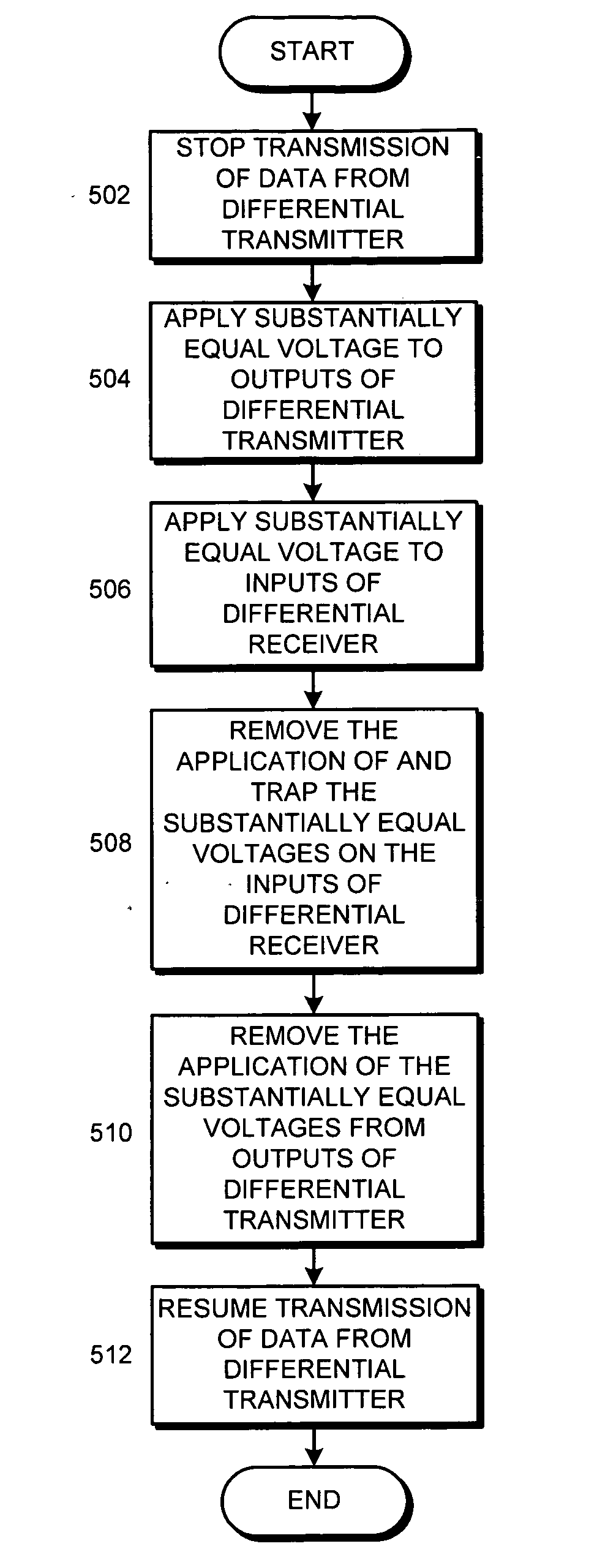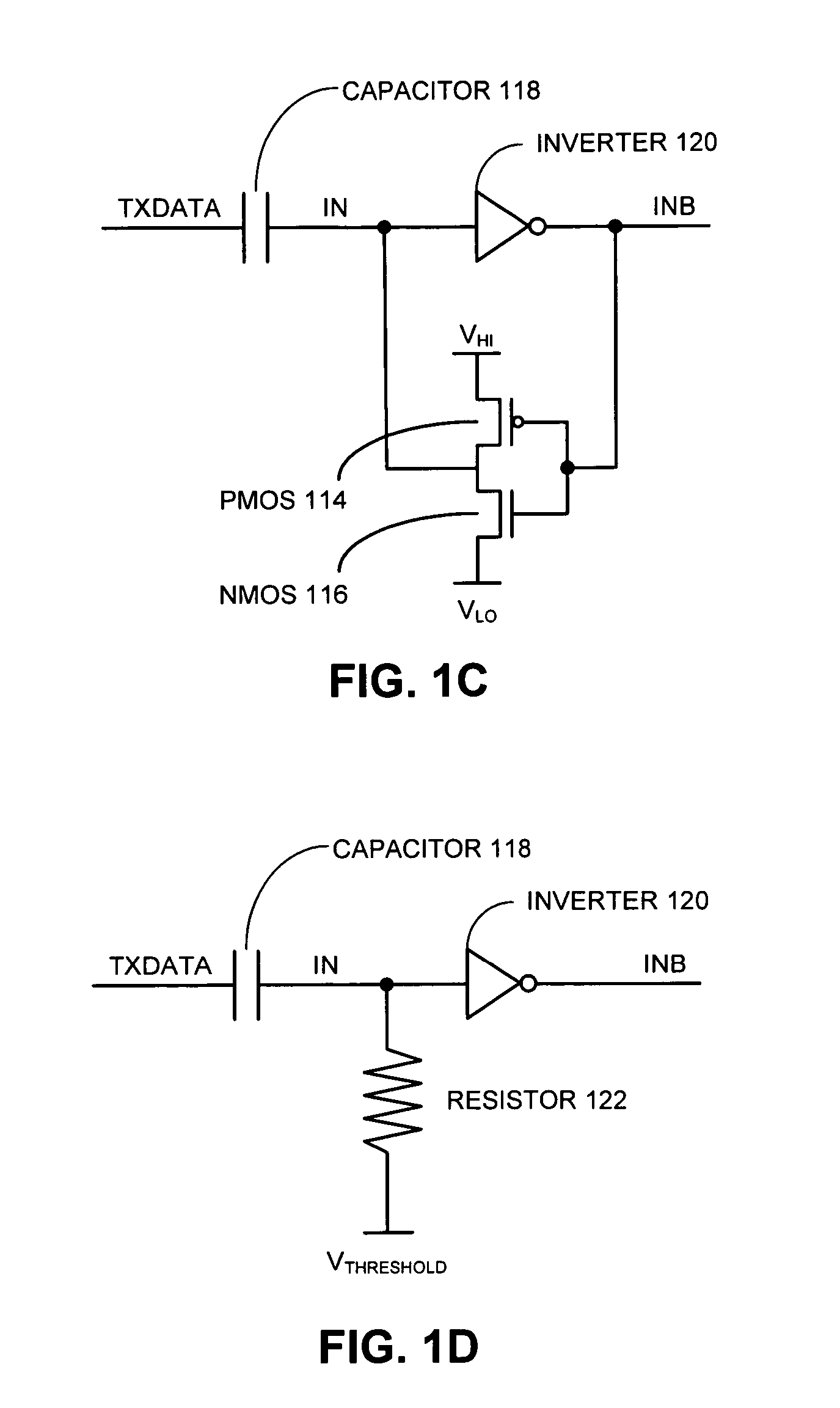Dynamic refreshed receiver for proximity communication
a receiver and proximity communication technology, applied in the direction of logic circuit coupling/interface arrangement, pulse technique, digital transmission, etc., can solve the problems of bottlenecks that are expected to worsen, limitations of traditional conductive connections, and inability to match the advances of semiconductor technology with the corresponding advances of inter-chip communication technology
- Summary
- Abstract
- Description
- Claims
- Application Information
AI Technical Summary
Benefits of technology
Problems solved by technology
Method used
Image
Examples
Embodiment Construction
[0036] The following description is presented to enable any person skilled in the art to make and use the invention, and is provided in the context of a particular application and its requirements. Various modifications to the disclosed embodiments will be readily apparent to those skilled in the art, and the general principles defined herein may be applied to other embodiments and applications without departing from the spirit and scope of the present invention. Thus, the present invention is not limited to the embodiments shown, but is to be accorded the widest scope consistent with the principles and features disclosed herein.
Differential Receiver Refresh Circuit
[0037] One embodiment of the present invention combines a differential receiver that has dynamic input nodes with a refresh mechanism, which periodically refreshes the input voltages to establish the correct DC voltage-level at the inputs of the differential receiver.
[0038] For example, FIG. 2 illustrates a data commu...
PUM
 Login to View More
Login to View More Abstract
Description
Claims
Application Information
 Login to View More
Login to View More - R&D
- Intellectual Property
- Life Sciences
- Materials
- Tech Scout
- Unparalleled Data Quality
- Higher Quality Content
- 60% Fewer Hallucinations
Browse by: Latest US Patents, China's latest patents, Technical Efficacy Thesaurus, Application Domain, Technology Topic, Popular Technical Reports.
© 2025 PatSnap. All rights reserved.Legal|Privacy policy|Modern Slavery Act Transparency Statement|Sitemap|About US| Contact US: help@patsnap.com



